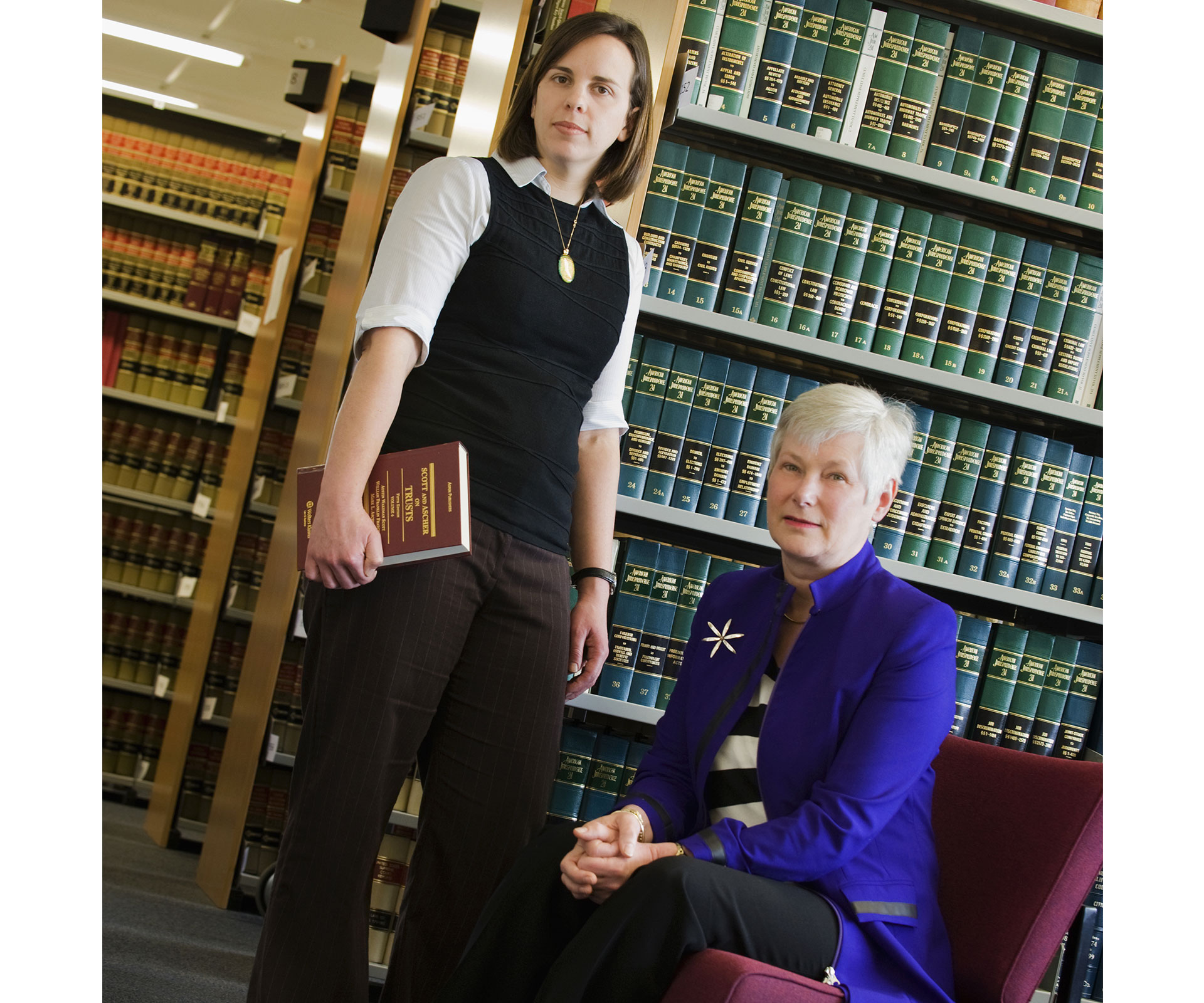Heather Walton goes into her second marriage in August, still cleaning up the legal wreckage from the end of her first one – seven years ago.
Walton was financially crippled by her break-up because the $60 million in assets she and her property investor husband had gathered during their six years together were locked up in a maze of family trusts of which she was neither trustee nor beneficiary. And, astoundingly for a former legal executive, she also hadn’t got round to signing a “pre-nup” or “contracting-out” agreement, another legal avenue by which she could have protected herself.
“I can’t believe how silly I’ve been,” she told us then.
Despite the financial setback, Walton has since forged a successful new career in real estate. Now Ray White’s top agent nationally, she co-owns one of its Auckland agencies, in Epsom. She is a wealthy woman – and she is not about to make the same mistakes twice.
Before their nuptials at Auckland’s Hilton Hotel this winter, she and her fiancé, Mark Bycroft, the manager of a luxury car dealership and her partner in the agency, are drawing up a range of legal agreements setting out the current value and future of their separate and joint assets. Yes, there will be trusts, and yes, there will be a “pre-nup”. But this time, neither party will be in any doubt about their worth and who is entitled to which part of it.
Walton says she is speaking out about her own case so others will learn from it. She says though formally organising your affairs is still touchy territory, it has to be done. “Even when you’re in love and everything’s great, it’s awkward enough. Imagine what it’s like if you don’t love that person any more; it’s a complete and utter mess.”
Walton has spent more than $300,000 in legal fees untangling the financial chaos from her first marriage. Such is the glacial speed of the courts, a hearing date hasn’t even been set yet. But that delay has probably worked in her favour, with relationship property lawyers telling us the sorts of structures that saw Walton walk away with only debts and her diamond ring – despite a $60 million property portfolio in trust – have never been more vulnerable in the courts.
“If she had run the case five years ago, ironically it would have been much harder,” says her barrister, Jane Hunter. Now, she says, there is a real willingness by the courts to find ways to correct serious injustices. “People who think they can use trusts to deprive their partner of what should be relationship property are dreaming.”

Heather Walton spent more than $300,000 in legal fees untangling the financial chaos from her first marriage.
Two recent cases have helped kick down the door to access property held in trusts – and those decisions will have wide ramifications not only for relationship splits, but also creditors in insolvency cases.
The two, known in legal circles as Clayton v Clayton and Clark v Clark, have effectively opened the way for the assets – company shares in one case and a property in the other – to be treated as relationship property and shared. In the Clark case, a farm and homestead in Clevedon in south Auckland had been held in a family trust established by Mr Clark’s grandparents. After the death of the grandparents, Mr Clark’s parents were two of the four trustees. Mr Clark and his wife had seven children and moved onto the property – at the behest of Mr Clark’s parents – in 1984, living and working there until Mrs Clark left in 2010.
In 2012, the High Court held that because there was always an intention and expectation that the property would become Mr Clark’s own, and Mr Clark and his wife had made major contributions to the property with that expectation, it could apply a constructive trust over Mr Clark’s family’s trust. This meant he had a beneficial interest in the asset, which could be treated as his separate property or relationship property.
The court ruled the farm land was his separate property, and the homestead in which the Clarks lived was relationship property. It ordered Mrs Clark receive half the increase in value of the separate property – $913,000 – plus a half share of the $300,000 family home.
It was the first time a constructive trust had been used to overcome the injustice, in a marriage settlement, of assets being locked up in an actual trust. It was initially used in de facto breakups when the legislation did not keep pace with their rights, but from 2009, Jane Hunter had promoted to fellow lawyers the potential for the argument to be used in family property.
In the Clayton case, the Court of Appeal ruled in March that because Rotorua sawmill owner Mark Clayton had absolute control of a key family trust and could make himself sole beneficiary, that power of appointment could be property, and therefore relationship property.
He held that power not as a trustee, but as the principal family member. Had he held it as a trustee, he would have owed a fiduciary duty to act in the best interests of the other beneficiaries of the trust.
Clayton’s wife, Melanie, has also challenged, and won, the right to a share of property held in other, differently structured trusts, but it is this ruling that is expected to have the biggest impact on relationship property law.
The value of Mark Clayton’s assets – mainly timber supply and sawmill company shares, but also land and buildings – has been estimated at $28 million, but he is disputing some valuations and has applied for leave to appeal the latest rulings to the Supreme Court.
Some lawyers believe the extent of the power Mark Clayton wielded over the trust is unusual today and therefore the impact of the case is lessened, but Hunter, who took that case through the Family and High Courts, and Lady Deborah Chambers, QC, who argued it in the Court of Appeal, are convinced it will have widespread significance.
“It will change the legal landscape because the legal landscape needs changing,” says Hunter.
She says it is common for settlors of family trusts to have the power to hire or fire trustees, and appoint or remove beneficiaries, even if they do not exercise those powers. “The point was not that he was the sole trustee, but that he could control absolutely the trust. And that is a very common scenario, particularly in trusts set up in the 1990s.”

Barrister Jane Hunter: “People who think they can use trusts to deprive their partner of what should be relationship property are dreaming.”
The other important aspect of Clayton was it showed again that one partner – usually the man – could not deprive the other of relationship property by deliberately under-paying themselves for the work they did in a trust business. “The courts are signalling that the injustice being wrought by trusts in this scenario can’t carry on, so ahead of any legislation to change that, the courts are going to use various devices to overcome that injustice,” Hunter says.
This means the courts will usually find a way to redress the balance if one party comes out of a relationship significantly worse off.
The only way serious inequity could happen now, believes senior family law specialist Antonia Fisher, QC, is if one partner has had a big inheritance, which is separate property, and that has been kept separate.
“In the past, there was a rigid adherence to the Matrimonial Property Act, and subsequently the Property (Relationships) Act and it was very difficult to convert separate property to relationship property. Courts now are far less conservative in their interpretation of the act.”
Otago University law professor Nicola Peart, a trust expert, says the Court of Appeal decision is effectively making the spirit of the Property (Relationships) Act – that property should be equally split on separation – take precedence over trust legislation. That worries her, because it’s almost changing the law by stealth, rather than parliamentary intention. “It’s really up to Parliament to be reforming the Property (Relationships) Act to make sure the act meets their objectives.”
In 2009, Peart and colleague associate professor Jessica Palmer studied the legal basis of trusts after widespread abuse of the structures.
Peart says lawmakers needed to “start from scratch” and establish what people did and did not expect to share in relationships and clearly decide what freedoms people should have to make their own arrangements – or even whether a compulsory equal division regime should continue at all.
Peart says the Court of Appeal, in a different case last November, had made an interim order signalling its intention to “barge in [to trusts] effectively”, and then, weeks later, the Clayton decision came out.
“There’s a pattern here. Basically, they’re saying we’re going to have a much closer look at this because we think we need to start changing the law from within – we’re not going to apply conventional trust law principles any more in order to give effect to the merits of relationship property claims.”
Another Otago law professor, Mark Henaghan, describes the Clayton decision as the court’s heaviest blow yet to trusts. “Clayton has really put the cat among the pigeons,” he says. “Trust lawyers are throwing their hands up in horror because they feel it will undermine a lot of trusts.”

Otago University law professor Nicola Peart, a trust expert (seated), and associate professor Jessica Palmer have researched the legal basis of trusts in the wake of widespread abuse.
He says many trusts are set up to give the settlor significant powers because it’s precisely what people want – to have their property at arm’s length from creditors and pesky ex-spouses, but still within their control.
“Trusts are meant to be hands off – that’s why they don’t count as relationship property – but people are trying to have it both ways, having total control like this guy did and also saying, ‘But it’s not my property.’”
The Clayton case is a strong reminder for lawyers that they should be setting up “real” trusts, where individuals did not have such control over the property in them.
Trusts have been a big industry for more than 20 years, but that’s slowly changing, Henaghan says. “Now the courts have been chipping away at them enough for people to think, ‘God, this is not quite the safety net we thought it was, so we either do it properly or we don’t do it at all.’”
Jane Hunter says the judicial decisions are reflecting society’s expectations about sharing what is really relationship property, but the legislation itself hasn’t kept up. She was on a Law Society committee which made strong submissions on Property (Relationships) Act amendments in 2001, urging Parliament to give courts overt powers to deal with trusts which held assets that were otherwise relationship property. The government refused, probably because “New Zealanders love their trusts”, having around 400,000 of them – more per capita than anywhere else in the world.
People entering relationships who want to protect their separate property have traditionally relied on a combination of trusts and a contracting-out agreement under section 21 of the Property (Relationships) Act.
But these so-called “section 21s” can also be thrown out if they’re seriously unfair to one party. Henaghan says an analysis of the 25 court challenges to the agreements heard in the past five years has seen 50 per cent overturned, most commonly because of lack of independent or effective advice. But 30 per cent were set aside because of serious injustice to the aggrieved party.
The legislated fallback position of a 50-50 split in assets when a relationship ends can also be challenged on economic disparity grounds under section 15 of the Property (Relationships) Act. Until recently, the courts nudged payouts up by relatively modest dollar amounts. But in a landmark ruling last July in the so-called Jack v Jack case, the High Court upheld a Family Court decision to award 70 per cent of a $1.8 million property pool to the wife, saying that she’d helped her orthopaedic surgeon husband enhance his career and had sacrificed her own during their 24-year marriage.

Otago law professor Mark Henaghan describes the Clayton decision as the court’s heaviest blow yet to trusts. “Clayton has really put the cat among the pigeons.”
When they met, she was an enrolled nurse and he was training in his specialty. He now earns around $1 million a year while she earns just $26,000 as a receptionist in a beauty salon.
The surgeon is appealing the decision. His lawyer, Mark Vickerman, told the court there was no economic disparity, or, if there was, it had been settled by the husband paying maintenance.
Vickerman says the only way to justify a 70-30 split would be if the man was a high earner now but wasn’t when they met. But in the Jack case, he had by then passed the first stage of the (specialists) exam and was “already destined” to become a high earner. His wife was a theatre nurse and could have gone back to work. “Her career hadn’t suffered – she could have returned to nursing.”
Vickerman says if the decision is upheld on appeal, there will be potentially a claim for unequal division of property in almost every separation. “Where there is uncertainty on a practical level, you are forcing people to go to litigation. Rather than effecting a clean break, they remain embroiled in the acrimony of their separation for far too long.”
This was the case before the 1976 law change which introduced the presumption of the 50-50 division after a three-year marriage. The provision was extended to de facto relationships in 2001.
“It’s one size fits all, but it’s a social good that we have predictable relationship property legislation. Now we’re moving back to the position where the law is unpredictable and uncertain.”
The 2001 amendments to the legislation had introduced a lot of discretion, allowing the courts to move from a 50-50 split in the interests of fairness. “There’s an irreducible tension in relationship property law between certainty and individual justice. It may serve individual cases, but it means more people have to go to court to find out what the result is.” And the way the court system is now, it could take at least a year to get a hearing.
He says the economic disparity provisions require judges to be “crystal-ball gazers”. “You get a 70 per cent economic disparity award and toddle off down to one of the bars at the waterfront to celebrate and while you’re there you meet a millionaire. Whereas, who knows, the other party is so befuddled and depressed he walks across the road and gets hit by a bus and can no longer work.”
Any disparity should be dealt with through child support and spousal maintenance, he argues. And if the couple made joint spending decisions during the relationship which reduced the amount available to share when it ended, that’s not solely the husband’s responsibility.

In March this year, the High Court also ditched the 50-50 principle in a case involving a man in his 60s and a woman in her late 40s who had a four-year de facto relationship. He owned the house before the woman moved in. Both had been previously married and they agreed to keep their finances separate, but the man paid for all the outgoings on the house, and almost all their holidays. The High Court agreed with the Family Court that it would be “repugnant to justice” or “completely unfair” for the woman to take half of the house – which represented almost all the property available to be split – at the end of their relationship.
Auckland family law specialist Jeremy Sutton, who highlighted the case on his website, told us that because it was a High Court decision only, it didn’t establish a “robust precedent” – for that it would need to go to higher courts.
“Many family lawyers and clients have been fascinated by this decision,” he says. “It does demonstrate that for older parties, there may be greater opportunities to argue unequal sharing where finances are kept separate and there are marked variations in financial contributions. But we’re not yet there – litigants need to continue to challenge in higher courts what constitutes ‘extraordinary circumstances’ to provide a strong precedent for unequal sharing.”
Antonia Fisher says while clients can still protect their separate property with section 21 agreements, those agreements have to be fair. “You’d never agree to a situation where on separation one party would keep all their assets and the other party would get nothing. In the past, if I was acting for a person who had all the assets, I would have been very keen to make sure they remained separate, but nowadays you’d never advise one party who has all the wealth to keep it separate forever because it’s more likely to be set aside.”
Fairness is all Heather Walton wants from her new contracts – and all she’s ever wanted after her first marriage. She recognises, her lawyer says, that her income will be equally shared by her husband – and she will share his.
“There are people who will tell you that you can protect your income,” says Jane Hunter, “but I think that’s wrong. I think that’s the fastest way for lawyers to come in at the end of a relationship and break down that structure if, within it, people treat their personal income as separate property.”
Walton says pre-nups aren’t a tacit admission of lack of trust but an essential tool, if handled correctly. “It’s horrible when you’re in love with this person and you’ve got to project 10 or more years forward to not loving them, having a terrible breakup and wondering what that would look like. It’s a bit of a mind-bend and I think that’s why most people can’t get their heads around it.
“But you need to set the line in the sand now. Once it’s done and tucked away, it’s the hugest sense of relief. You have to realise that while you go into things with the best of intentions, things change and people can turn into other people. You’ve got to be really realistic about it and go, ‘What if?’”

Law-changing cases
Relationship property feuds are now reaching the highest courts in the land, with new precedents being set. Important cases decided or disputed recently include:
Clayton v Clayton, 2015
The Court of Appeal rules that Mark Clayton’s right to remove discretionary beneficiaries from a family trust, leaving himself as the sole beneficiary, could be “property” and therefore relationship property. It said the value of that relationship property was the net value of the trust’s assets. Mark Clayton is seeking leave to appeal the decision.
Thompson v Thompson, 2015
The Supreme Court overturns a Court of Appeal ruling that an $8 million restraint of trade payment to the husband when the couple’s business was sold constituted separate property. The Supreme Court said it was relationship property and should be divided equally with his former wife.
Jack v Jack, 2014
The High Court upholds a Family Court decision to award 70 per cent of a $1.8 million relationship property pool to the wife of an orthopaedic surgeon because of economic disparity. The husband has been granted leave to appeal.
Clark v Clark, 2012
The High Court awards to the wife half the value of a family home, and half the increase in value of separate property, which, at the time of separation, were owned by a trust in the name of the husband’s family.
Words by: Donna Chisholm
Photos: Ken Downie, Simon Young and Getty Images


